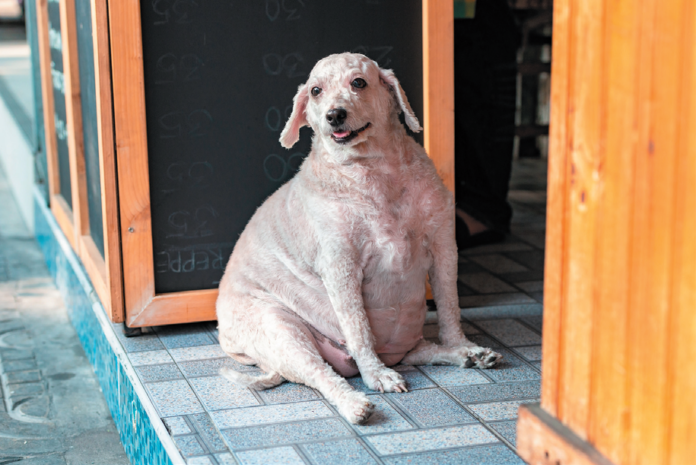If you’ve recently had your dog spayed or neutered and it looks like your pet has put on a few, you’re probably not imagining it. Spaying and neutering don’t cause weight gain, but they do create physiological changes that predispose a dog to packing on extra pounds. The risk for weight gain is highest during the first two years after the procedure, according to a study in the Journal of the American Veterinary Medical Association.
The hormonal factor
The loss of sex hormones when a dog’s ovaries or testicles are removed causes a decrease in metabolic rate. That means calories are not burned as quickly, so fewer calories are needed for the dog to maintain its weight. Add to that the fact that those hormones make a dog more likely to engage in physical activity generally, and the loss of them means the animal is less likely to burn as many calories in daily moving around. It’s a double whammy. Fewer calories are required because of hormonal changes, and the dog’s slowed-down lifestyle means fewer calories are “used up.”
Other hormones may be affected, too, namely leptin and insulin. Leptin influences appetite, while insulin controls blood sugar. Shifts resulting in an increased appetite are the last thing a dog needs when less food is now needed to maintain body weight.
Excess weight not a foregone conclusion
A spay or neuter for your dog is a nutritional inflection point. To help your pet maintain ideal body weight that will allow him or her to live healthier and longer, you may have to change the amount you feed and maybe even the food itself. How many fewer calories should the dog get? A study from the Faculty of Veterinary Medicine at Belgium’s University of Liege suggests a calorie reduction of up to 30 percent may be necessary for some dogs to avoid weight gain post-spaying or neutering.
Speak to your vet to learn how that translates in terms of reduced portion sizes. In some cases, the doctor may advise switching to a food with a lower calorie density and a higher nutrient density. That will provide a wider safety margin for measuring while reducing the risk that fewer calories will mean less nutrients.
You’ll also want to make a conscious effort to engage with your dog more in physical activity. Just as boredom often leads to excess eating for people, it may make dogs want to nosh on extra calories, too. Taking your dog for more than two walks a day, playing a little catch with your pet, and maybe having a game of chase around the house can work wonders for keeping an animal’s mind off food — even as he or she burns calories during physical activity.





